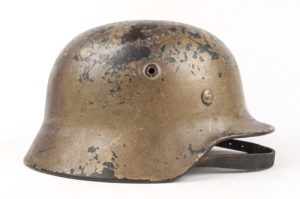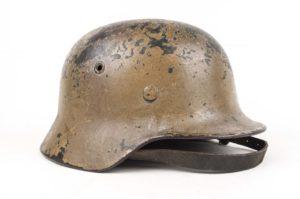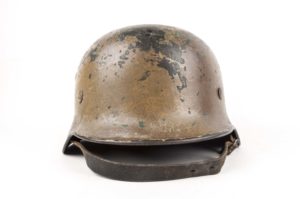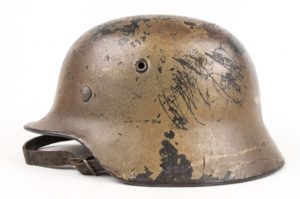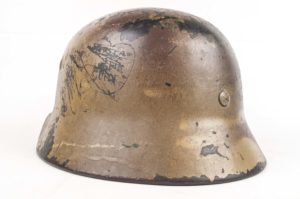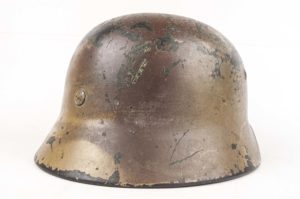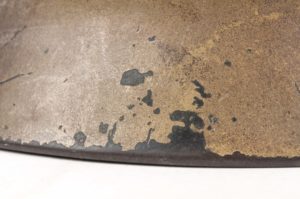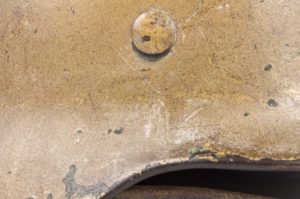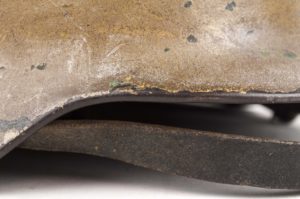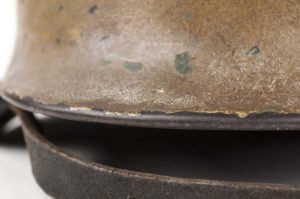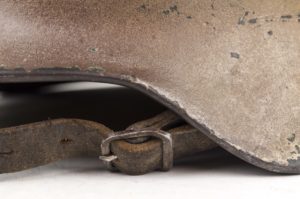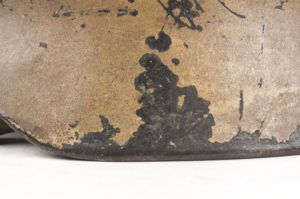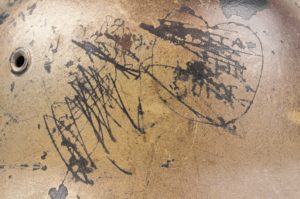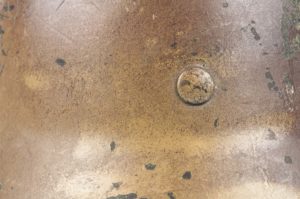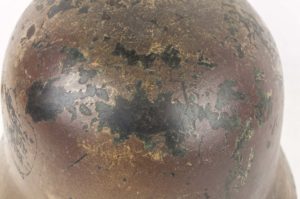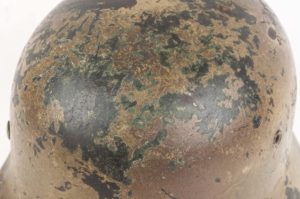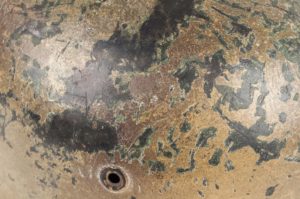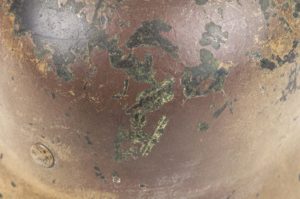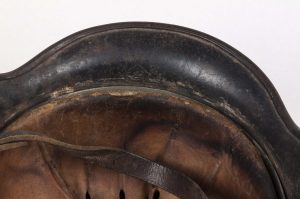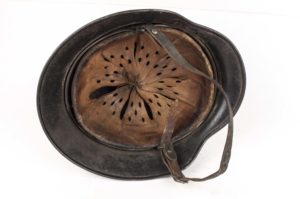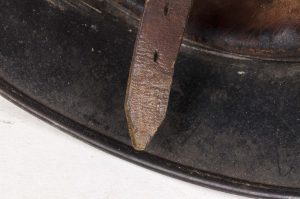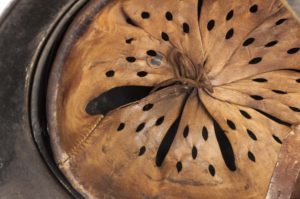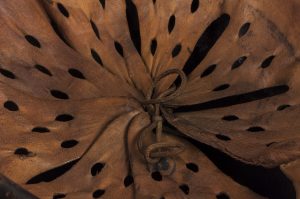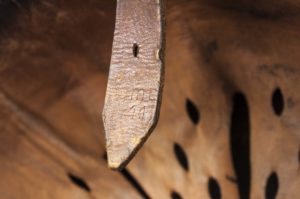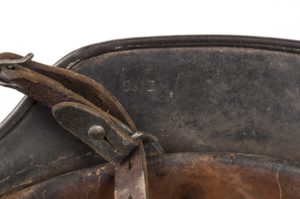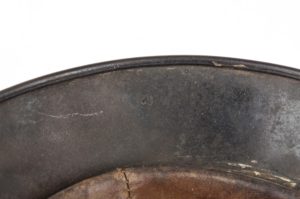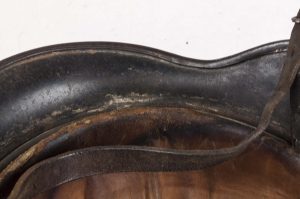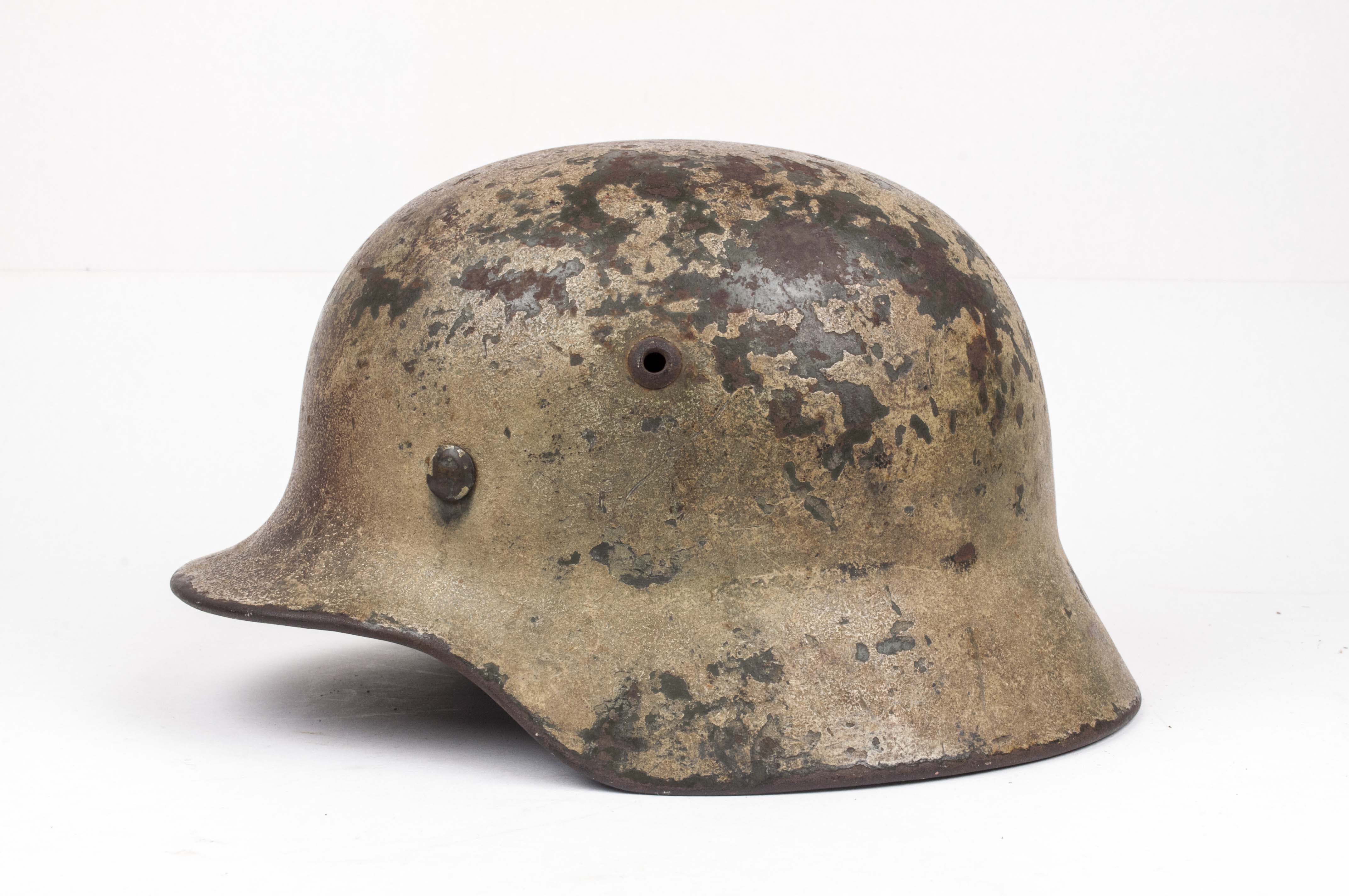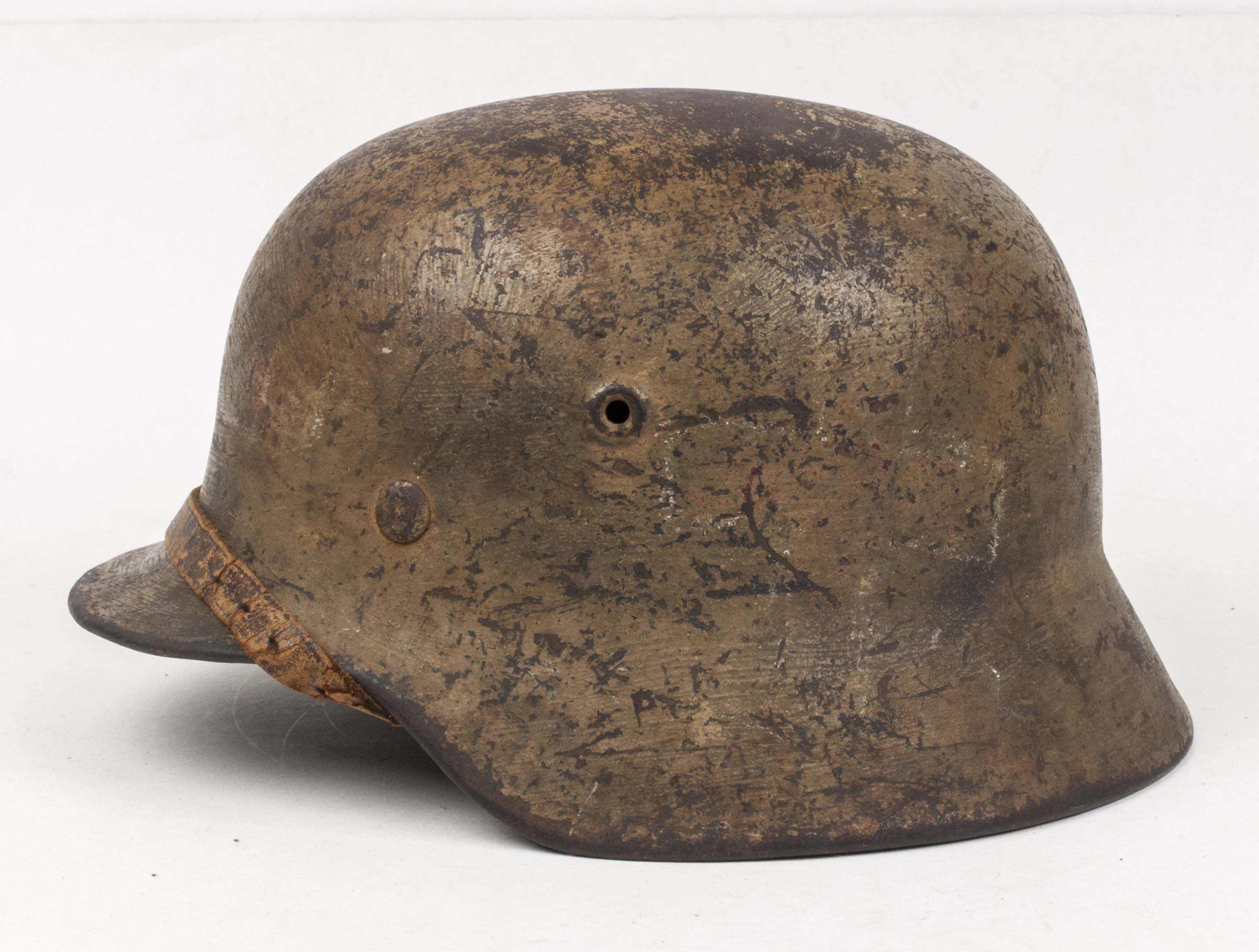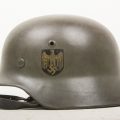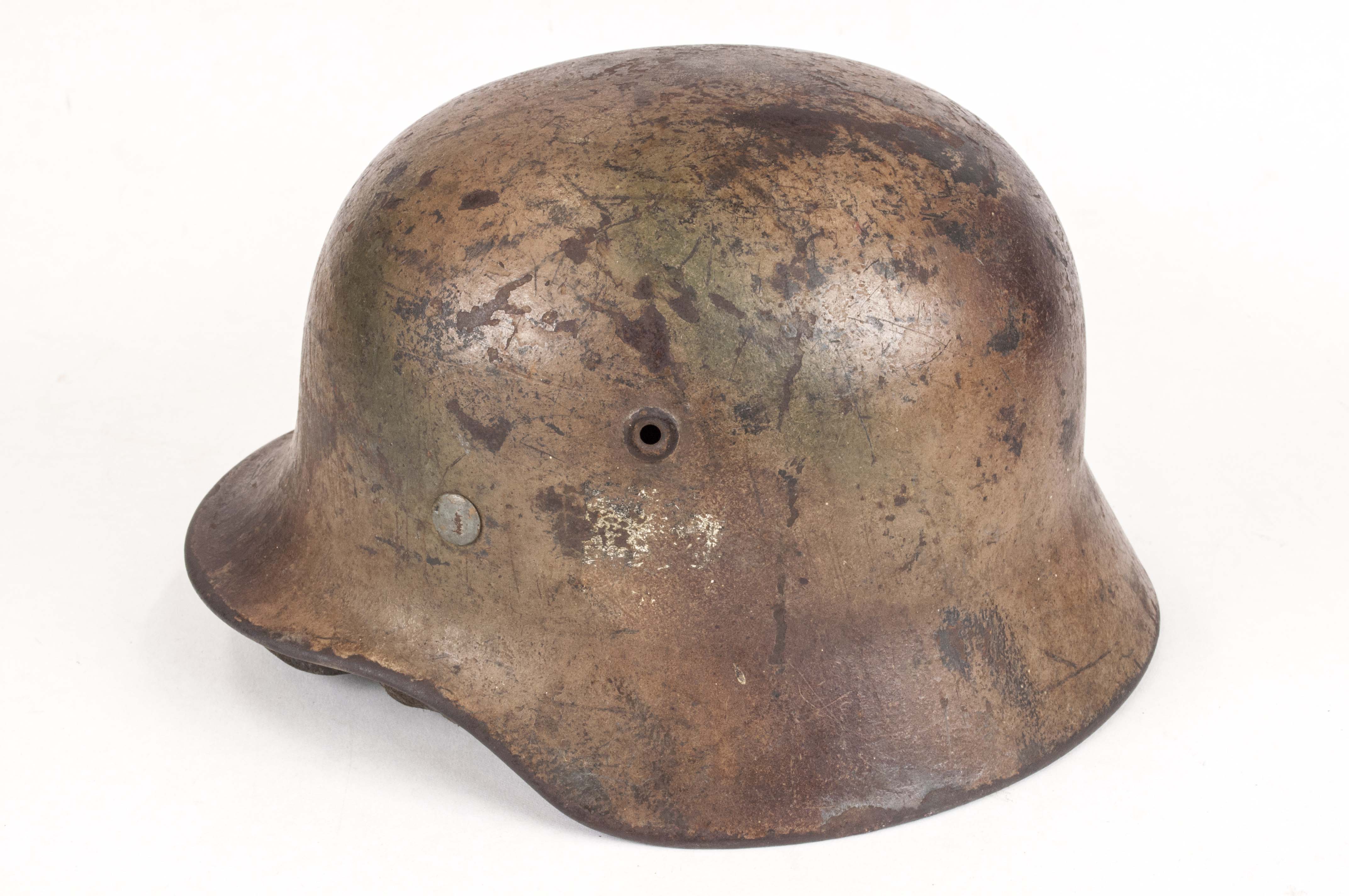Helmet – M40 – ET66 – Three tone “Normandy” camouflage
Arguably the helmet was the most recognizable part of the individual German soldiers appearance. With a design that derived from the type used in world war one, the German helmet offered more protection then ones used by it’s enemies. The quality field gray painted steel helmet with two decals and rolled steel rim and leather liner was a labor intensive product and simplified as the war progressed. The earliest model helmet used in world war two was the model 35 or M35 Stahlhelm. During the war the helmet was simplified in 2 stages. In 1940 the airvents changed from separate rivets affixed to the helmet shell to stamped in the main body of the shell. In 1942 a new model was introduced where the rim of the shell was left sharp and not rolled over as previous models. These models are known in the collector community as M40 and M42. The low sides that protect the neck and ears, the tell tale design that the Germans introduced in 1935 can still be seen in modern day army helmets.
Model: M40
Decal: –
Paint: In total 5 layers.
1. Factory applied dull field blue gray paint with rough aluminium oxide. Probably a Luftwaffe Decal underneath.
2. Brush applied re-issue green paint. This indicates use by the Heer or Waffen-SS.
4. White chalk winter camouflage paint. Remnants of this can be seen where the Normandy camo has flaked.
5. A spray painted three tone so called Normandy camouflage.
Chinstrap: Marked gmo 41 which stands for Rahm u. Kampmann, Lederwarenfabrik, Kaiserslautern.
Markings: ET66 – 62
Maker: Eisenhüttenwerke, Thale.
Size: Shellsize 66, headsize 59 cm
Batch number: 62
Year: 1940
Notes: This helmet started out a Luftwaffe m40 due to the blue paint. Later it is re-issued in the Heer or Waffen-SS. At some point after the helmet was picked up from the battlefield, someone etched a heart in the side of the helmet. This has later been scratched out. It did not survive being a valentines card!



